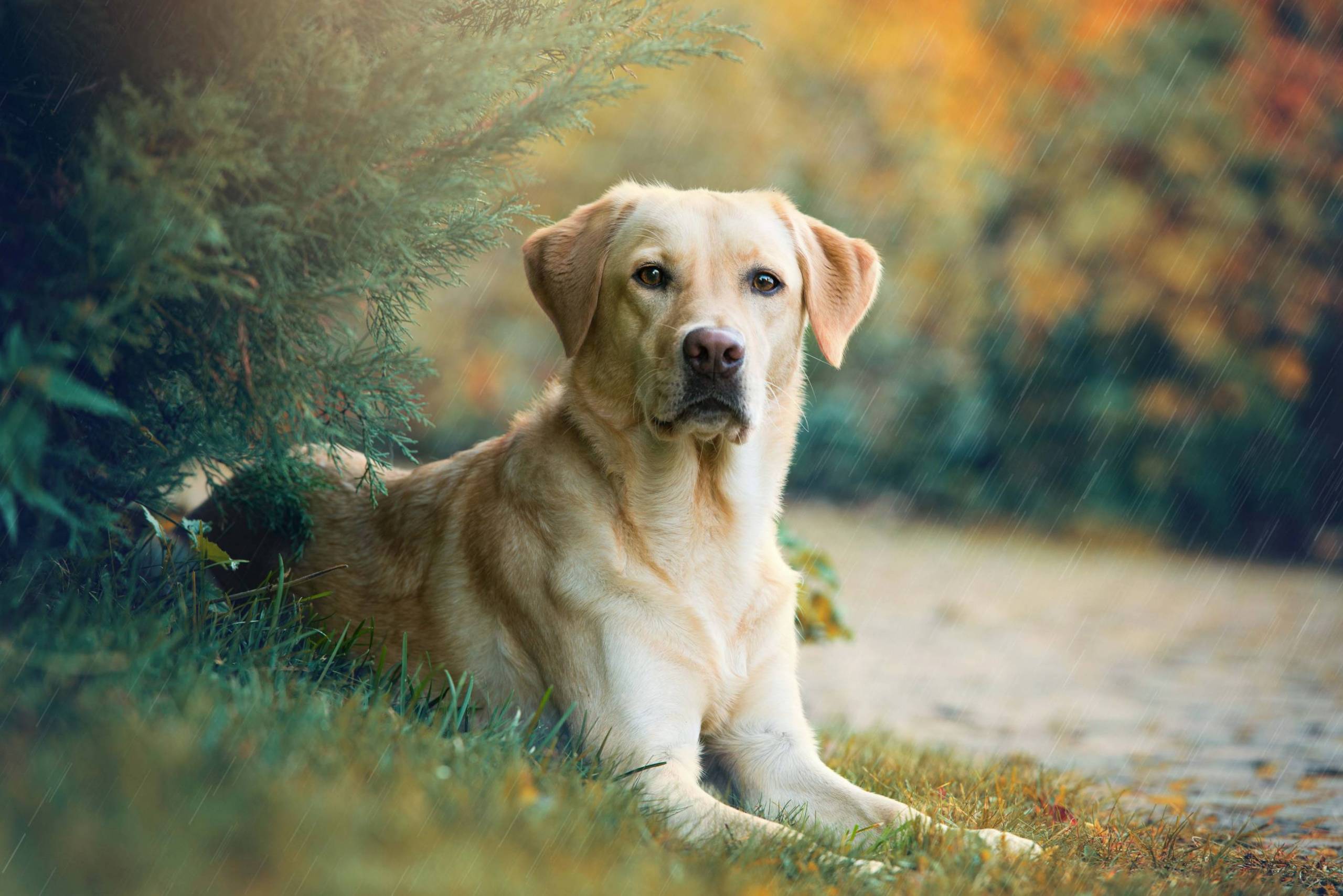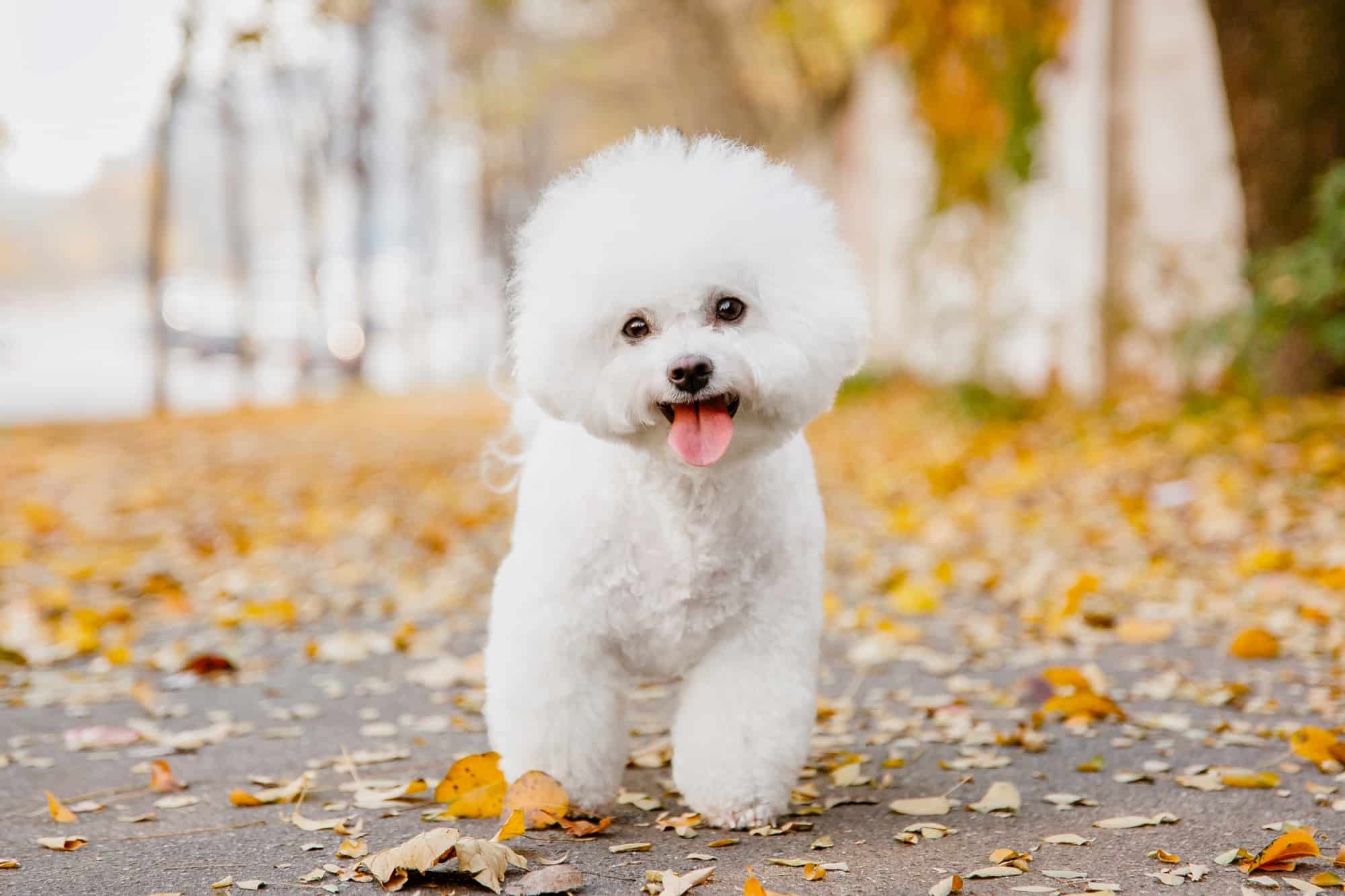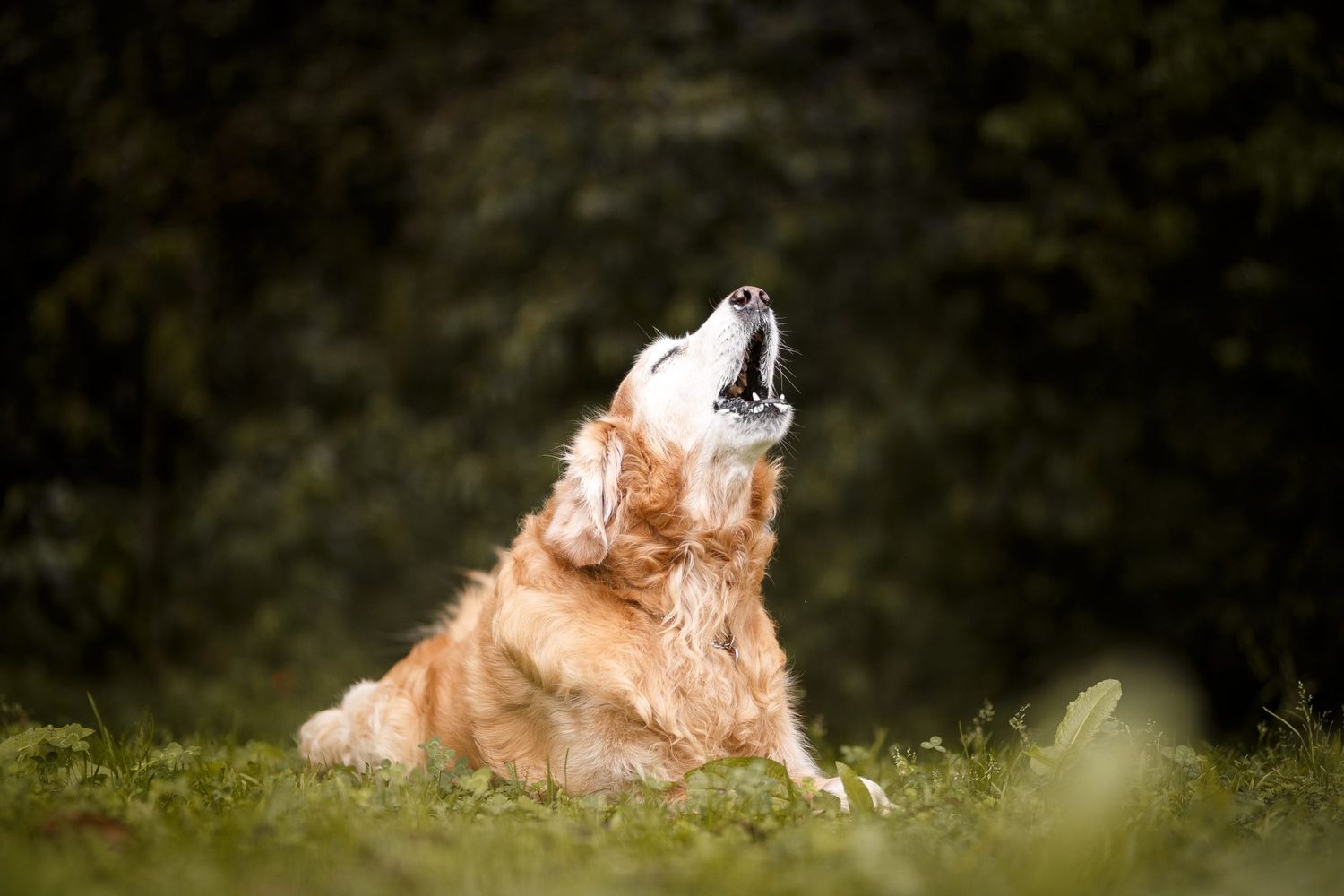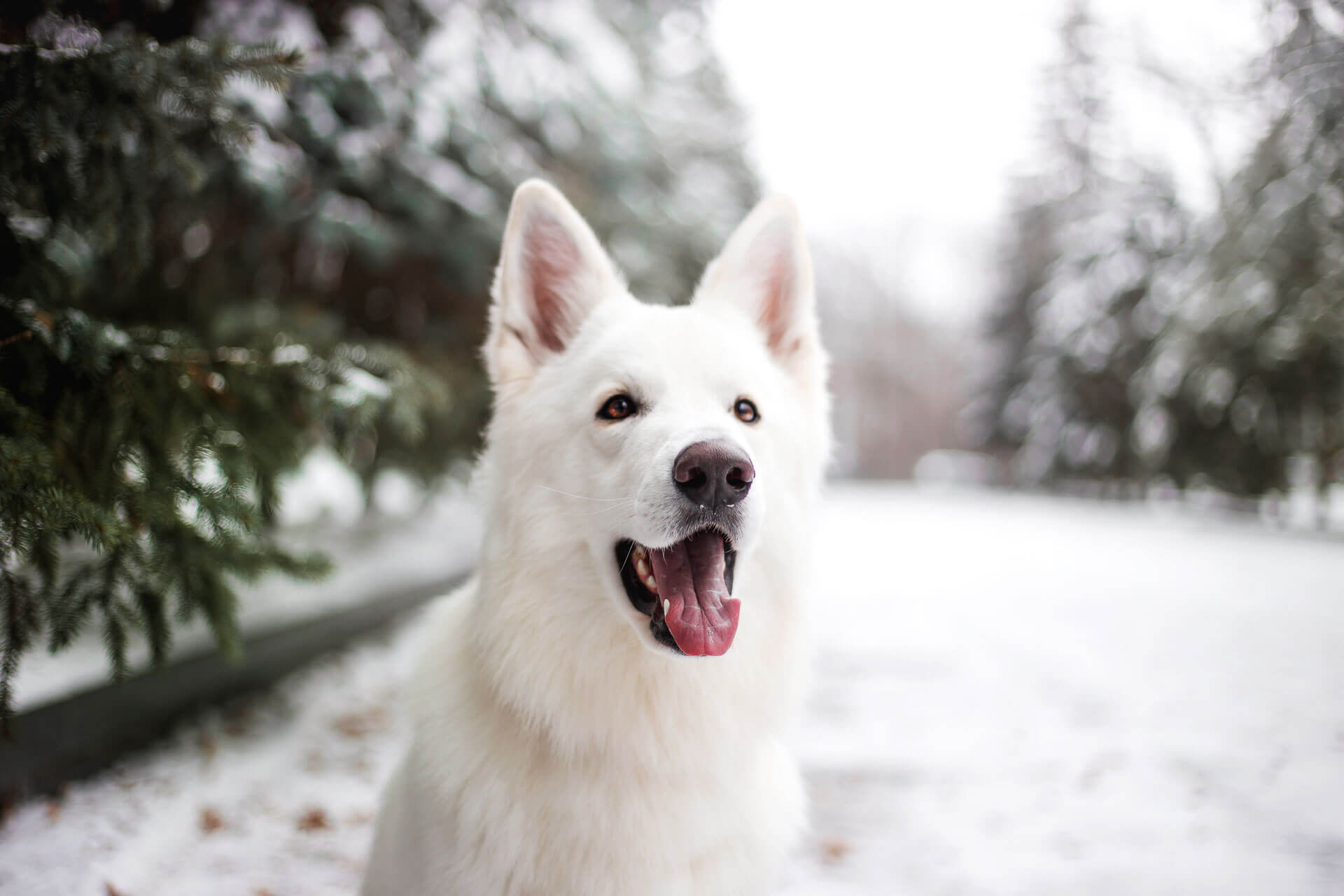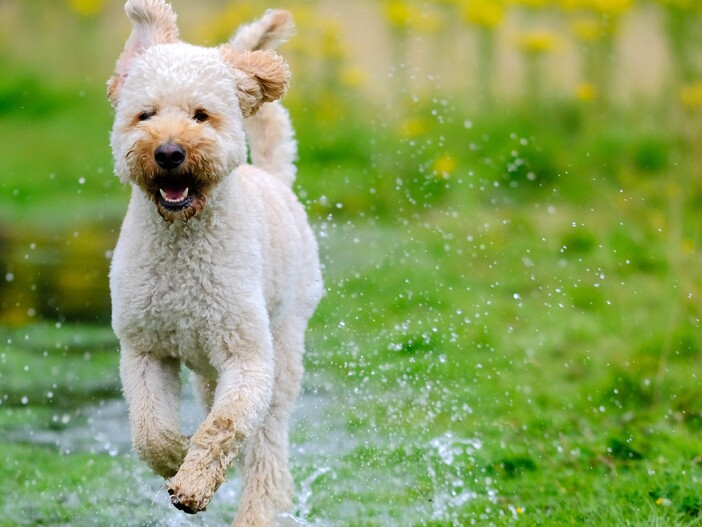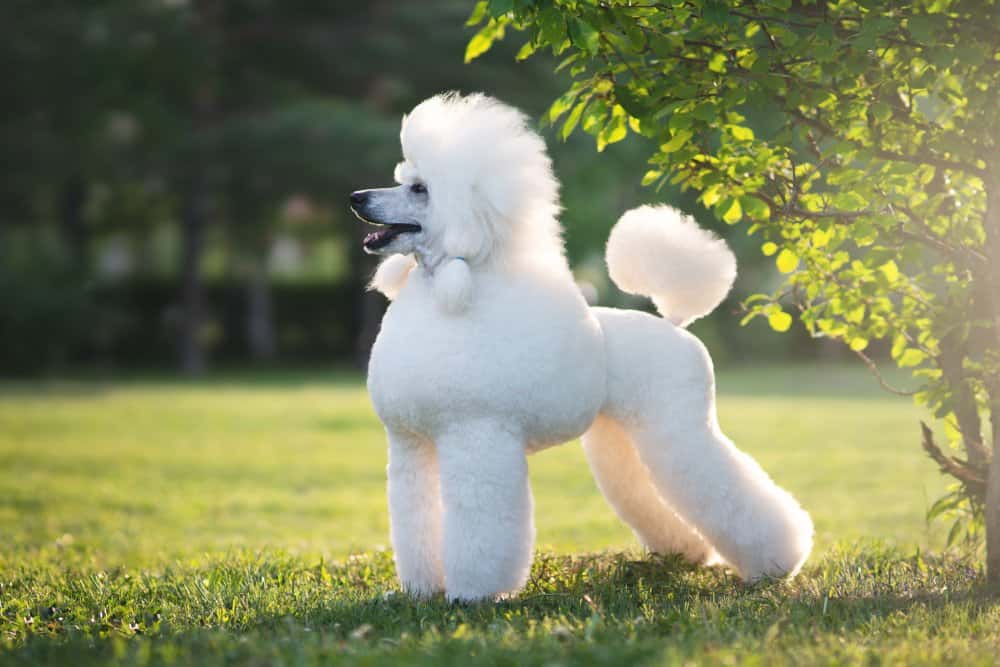If you’re a dog lover, you know that there are countless breeds out there, each with its own unique characteristics and traits. One of the most striking features of some dogs is their tricolor coat, which can come in a variety of patterns and combinations.
In this article, we’ll take a look at 20 of the most beautiful and unique tricolor dog breeds, according to various sources. From the beloved Beagle to lesser-known breeds like the Entlebucher Mountain Dog, we’ll explore the genetics, traits, and history of these stunning pups.
You are reading: Top 20 Tri Colored Dogs
Whether you’re looking for a new furry friend or simply appreciate the beauty of these dogs, read on to discover some of the most gorgeous tricolor breeds out there.
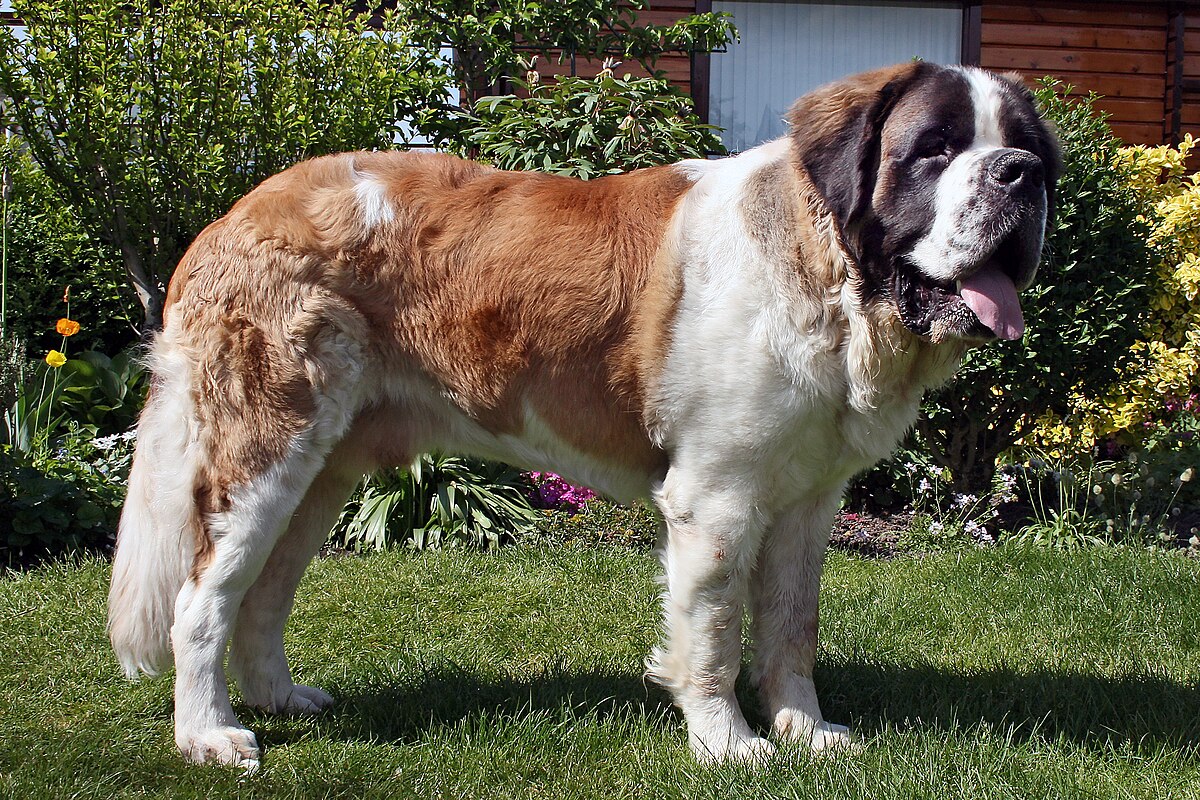
Top 20 Tri Colored Dogs
Saint Bernard
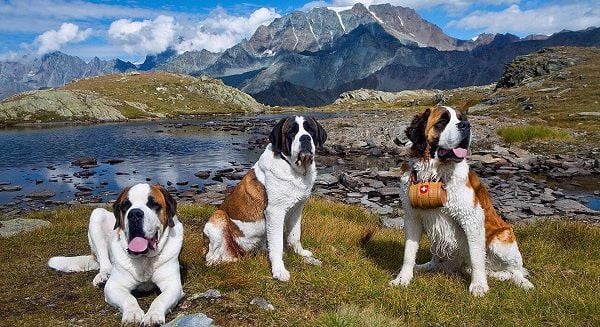
The Saint Bernard is a breed of very large working dog originating from the Western Alps in Italy and Switzerland. They were originally bred for rescue work by the hospice of the Great St Bernard Pass on the Italian-Swiss border, which was built by and named after the Alpine monk Saint Bernard of Menthon.
These genial giants are known for their watchfulness, patience, and care with children.
Key Characteristics:
– Size: The Saint Bernard is a giant dog, standing 26 to 30 inches (66 to 76 cm) tall at the withers and weighing 120 to 180 pounds (54 to 82 kg).
– Coat: The coat can be either smooth or rough, with the smooth coat being close and flat, while the rough coat is dense, flat, and more profuse around the neck and legs. The color is typically a red shade with white, or a mahogany brindle with white, with black shading usually found on the face and ears.
– Temperament: Saint Bernards are friendly, welcoming, and have a steady, benevolent temperament. They are extremely gentle, friendly, and very tolerant of children. These dogs are slow-moving, patient, obedient, extremely loyal, and eager to please.
– Exercise Needs: The Saint Bernard is a low-energy dog and a slow mover, requiring moderate exercise.
– Health Concerns: Due to their giant size, Saint Bernards have a shorter than average canine lifespan and can suffer from a variety of genetic diseases and disorders.
Fun Facts:
– The long-haired variety of Saint Bernard was produced by crosses with the Newfoundland dog in the early 19th century.
– The breed is recognized internationally by the Fédération Cynologique Internationale as a Molosser in Group 2, Section 2.
Entlebucher Mountain Dog
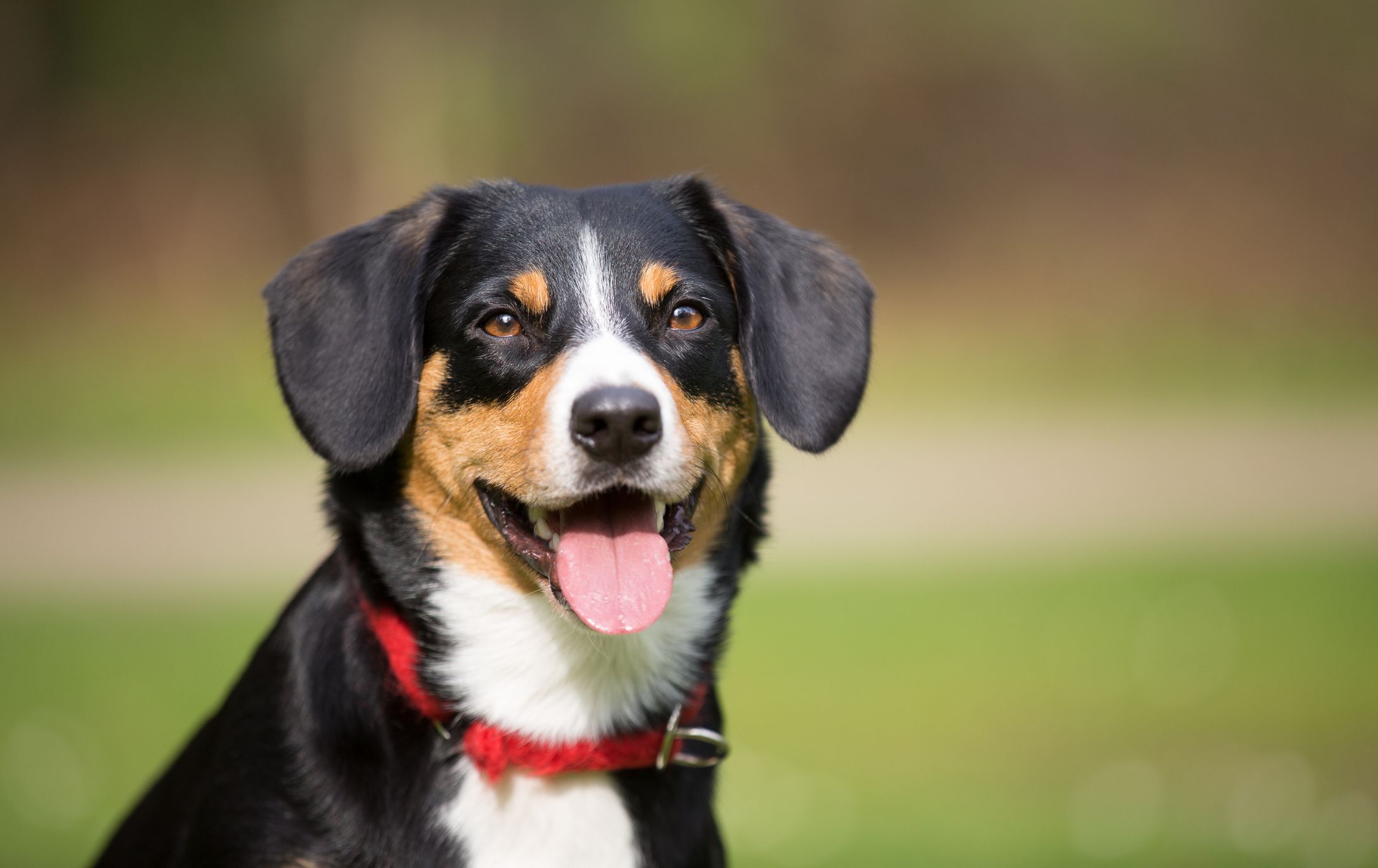
The Entlebucher Mountain Dog, also known as the Entlebucher Sennenhund, is a medium-sized herding dog that belongs to the Sennenhund dog type. It is the smallest of the four regional breeds that make up this group, which also includes the Appenzeller Sennenhund, the Bernese Mountain Dog, and the Greater Swiss Mountain Dog.
The breed originated in the Entlebuch region of Switzerland, where they were used as cattle dogs. These dogs are muscular and have short, sturdy legs, standing from 16 to 21 inches (41 to 53 cm) at the shoulder. They have a tricolor coat that is typically black, white, and tan, and they have a distinctive “laughing” expression.
Entlebucher Mountain Dogs are independent problem solvers and energetic workers that require lots of exercise. They are highly affectionate with their human family members and are fairly easy to groom.
If you’re considering adding an Entlebucher Mountain Dog to your family, be prepared for a lively, joyful, and spirited companion that will need plenty of exercise and attention.
Beagle
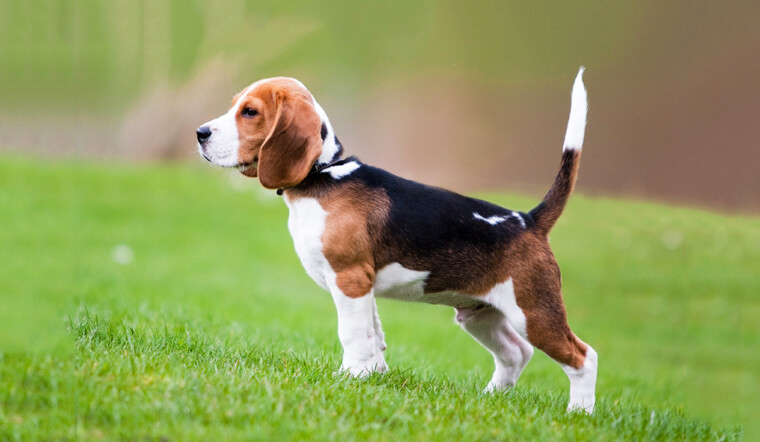
The Beagle is a small scent hound breed, similar in appearance to the larger foxhound. Here are some key characteristics and facts about Beagles:
– Appearance: Beagles are small to medium-sized dogs with short, smooth coats that come in a variety of colors, including white, black, brown, and tan. They have a sturdy and compact body, a fairly long and slightly domed skull, and large brown or hazel eyes.
– Temperament: Beagles are described as “merry,” amiable, and typically neither aggressive nor timid. They are loving, sweet, and gentle, and they enjoy the company of both humans and other dogs. However, their independent nature and hunting instincts can make them stubborn and distractible, which can be challenging during training.
– Exercise and Training: Beagles are active companions and require regular exercise, such as vigorous playtime or a long leash walk. They should be supervised when outdoors, as they may wander off if they catch an enticing smell in the air. Beagles can be clever escape artists, so a fenced yard is recommended. Patient and firm training techniques are necessary to work with their determined and watchful nature.
– Good with Children and Pets: Beagles are known to be excellent family dogs, as they are good with children and generally get along well with other dogs. However, due to their hunting instincts, they should not be trusted with non-canine pets unless they are properly socialized with them from a young age.
– Watchdogs and Barking: Beagles have a tendency to bark or howl when confronted with the unfamiliar, making them good watch dogs. However, this can also be a potential source of noise if they are not trained to control their vocalizations.
Bernese Mountain Dog
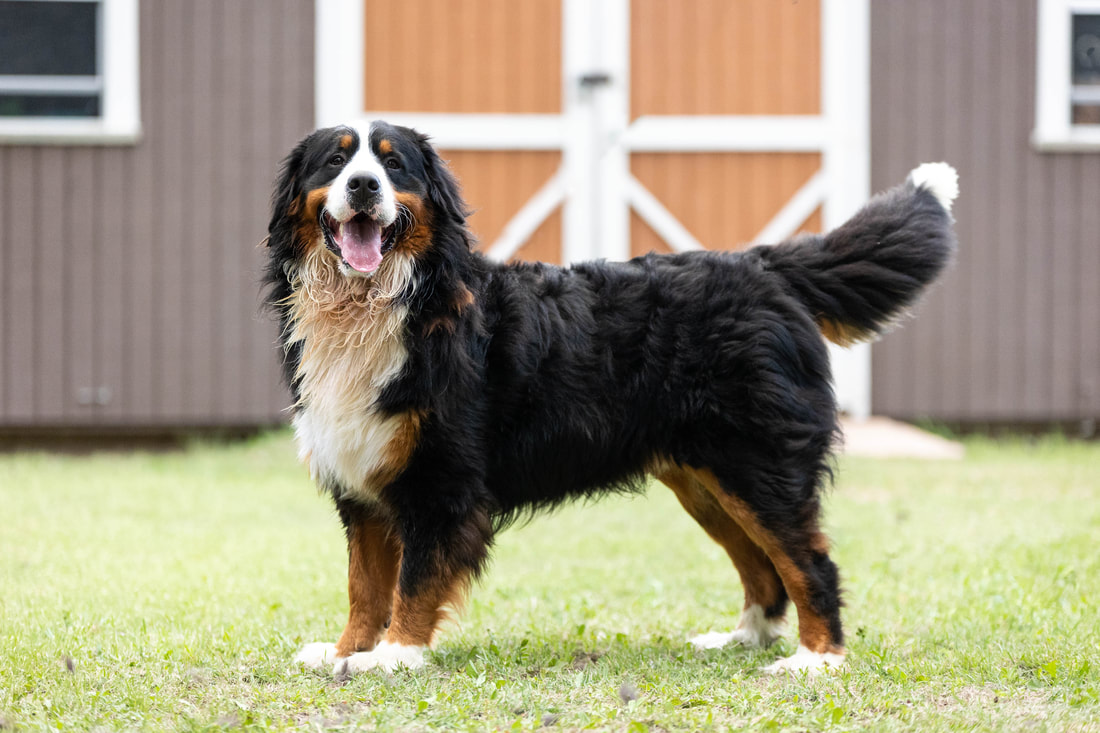
The Bernese Mountain Dog is a large breed of dog that originated in Switzerland.
Here are some key characteristics and facts about Bernese Mountain Dogs:
Appearance:
– Bernese Mountain Dogs are large and sturdy dogs, standing 23-27.5 inches (58-70 cm) tall at the withers and weighing around 88 pounds (40 kg).
– They have a long, silky, tricolored coat that is black, rust, and white.
– They have a broad chest, hanging V-shaped ears, and a friendly expression.
Temperament:
– Bernese Mountain Dogs are gentle, even-tempered, and loyal. They are known for their eagerness to please and their affectionate nature.
– They are protective and make good watchdogs, but they can bark more than some owners may desire.
– With proper socialization, they can be open to meeting strangers.
Read more : How to Soften Dog Eye Boogers
Exercise and Training:
– Bernese Mountain Dogs are a working breed and require regular exercise and mental stimulation. They enjoy activities like hiking, carting, and obedience training.
– They are intelligent and eager to please, but they can be stubborn and require consistent training and socialization.
Good with Children and Pets:
– Bernese Mountain Dogs are generally good with children and other pets. They are known for their gentle nature and patience with kids.
– They are protective of their families and can be wary of strangers.
Read more : 7 Types Of Chihuahua Dogs
Health Concerns:
– Bernese Mountain Dogs are prone to several health issues, including hip and elbow dysplasia, bloat, and cancer. They have a relatively short lifespan of around 7-8 years.
If you’re considering adding a Bernese Mountain Dog to your family, be prepared for a large, affectionate, and loyal companion that requires regular exercise and socialization. They are great with kids and other pets, but they can be protective of their families and may require consistent training.
Basset Hound
The Basset Hound is a beloved breed of dog known for its long, droopy ears, wrinkled forehead, and sad-looking eyes. Here are some key characteristics and facts about Basset Hounds:
Appearance:
– Basset Hounds are short-legged and heavy-boned dogs, standing up to 15 inches (38 cm) tall at the withers and weighing 40 to 65 pounds (18 to 29 kg).
– They have a short, smooth coat that comes in a variety of colors, including black, tan, reddish-brown, and white.
– They have a rounded skull, deep muzzle, and a lot of loose skin on the face, which is heavily wrinkled over the brow when the dog is tracking.
Temperament:
– Basset Hounds are friendly, easygoing, and mild-mannered dogs. They were originally bred to hunt in packs, so they tend to be good with other dogs and other pets in general.
– They are known for their powerful sense of smell, which is second only to the Bloodhound’s. They are excellent at scent work and tracking, and they consistently perform well in AKC Scent Work and Tracking.
– They can be stubborn and independent, which can make training a challenge. They are also known for their loud barks and howls.
Read more : How to Soften Dog Eye Boogers
Exercise and Training:
– Basset Hounds are scent hounds and require regular exercise and mental stimulation. They enjoy activities like walking, sniffing, and tracking.
– They can be difficult to train due to their stubborn nature, but they respond well to positive reinforcement and consistency.
Good with Children and Pets:
– Basset Hounds are generally good with children and other pets. They are known for their gentle nature and patience with kids.
– They can be protective of their families and may bark or howl if they sense a threat.
Read more : 7 Types Of Chihuahua Dogs
Health Concerns:
– Basset Hounds are prone to several health issues, including hip dysplasia, ear infections, and obesity. They have a relatively short lifespan of around 10-12 years.
If you’re considering adding a Basset Hound to your family, be prepared for a friendly, easygoing, and scent-driven companion that requires regular exercise and mental stimulation. They are great with kids and other pets, but they can be stubborn and may require consistent training.
Bull Terrier
The Bull Terrier is a breed of dog that was originally developed in 19th-century England as a fighting dog. Today, they are known for their playful and endearing personalities, as well as their devotion to their families. Here are some key characteristics and facts about Bull Terriers:
Appearance:
– Bull Terriers have a distinctive egg-shaped head and a muscular, compact body.
– They have a short, smooth coat that comes in a variety of colors, including white, black, brindle, and fawn.
– They stand 21 to 22 inches (53 to 56 cm) tall at the withers and weigh about 50 to 70 pounds (23 to 32 kg).
Temperament:
– Bull Terriers are known for their playful and endearing personalities. They are loyal, affectionate, and energetic dogs that love to play and get into mischief.
– They can be stubborn and independent, which can make training a challenge. They are also known for their loud barks and howls.
– They are generally good with children and other pets, but they may be aggressive around other dogs.
Read more : How to Soften Dog Eye Boogers
Exercise and Training:
– Bull Terriers are active dogs that require regular exercise and mental stimulation. They enjoy activities like walking, running, and playing fetch.
– They can be difficult to train due to their stubborn nature, but they respond well to positive reinforcement and consistency.
Read more : 7 Types Of Chihuahua Dogs
Health Concerns:
– Bull Terriers are prone to several health issues, including deafness, skin allergies, and kidney disease. They have a relatively short lifespan of around 10-12 years.
If you’re considering adding a Bull Terrier to your family, be prepared for a playful, energetic, and sometimes stubborn companion that requires regular exercise and mental stimulation. They are generally good with children and other pets, but they may require consistent training and socialization.
Pit Bull
The American Pit Bull Terrier, commonly known as the Pit Bull, is a breed of dog that was originally bred for fighting in 19th-century England.
Here are some key characteristics and facts about Pit Bulls:
Appearance:
– Pit Bulls have a short, smooth coat that comes in a variety of colors, including black, white, brindle, fawn, blue, red, brown, tan, and gray.
– They have a well-muscled body and a big smile, with a height of 17 to 21 inches (43 to 53 cm) at the shoulder and a weight of 30 to 60 pounds (14 to 27 kg).
Temperament:
– Pit Bulls are known for their loyalty, affection, and courage. They are generally friendly and playful with their human family members, but they can be wary of strangers and other dogs.
– They are protective of their families and make good watchdogs, but they can be stubborn and require consistent training and socialization.
– Pit Bulls are often misunderstood and have a reputation for being aggressive, but this is largely due to irresponsible ownership and media sensationalism.
Read more : How to Soften Dog Eye Boogers
Exercise and Training:
– Pit Bulls are active dogs that require regular exercise and mental stimulation. They enjoy activities like walking, running, and playing fetch.
– They can be difficult to train due to their stubborn nature, but they respond well to positive reinforcement and consistency.
Good with Children and Pets:
– Pit Bulls can be good with children and other pets if they are properly socialized and trained from a young age. However, they should always be supervised around small children and non-canine pets.
Read more : 7 Types Of Chihuahua Dogs
Health Concerns:
– Pit Bulls are generally healthy dogs, but they are prone to certain health issues, such as hip dysplasia, allergies, and skin infections. They have a lifespan of around 12-14 years.
If you’re considering adding a Pit Bull to your family, be prepared for a loyal, affectionate, and active companion that requires regular exercise and socialization. They are often misunderstood and have a reputation for being aggressive, but with proper training and socialization, they can make wonderful pets.
Pomeranian
The Pomeranian is a toy breed of dog that originated from the Pomerania region in Europe. They are descended from larger Spitz-type dogs, specifically the German Spitz.
Pomeranians are small dogs, weighing between 3 to 7 pounds (1 to 3 kg) and standing 8 to 14 inches (20 to 36 cm) high at the withers. They have a compact but sturdy body, a highly plumed tail set high and flat, and a ruff of fur on the neck that Poms are well known for.
Pomeranians are highly energetic, intelligent, and often exhibit a confident and curious demeanor, making them popular as companion dogs. They come in a variety of colors and patterns and require regular grooming to maintain their luxurious coat.
Pomeranians are often described as fearless, lively, and full of spunk, with a natural curiosity about the world and a bright-eyed, perky-eared appearance. They are friendly but can be bossy at times and are extremely loyal to their loved ones.
With proper training, Pomeranians can make excellent companions, though they may not be ideal for families with young children.
Cocker Spaniel
The Cocker Spaniel is a breed of dog that originated in the United Kingdom and was bred as a gun dog to hunt birds. Here are some key characteristics and facts about Cocker Spaniels:
Appearance:
– Cocker Spaniels are medium-sized dogs, standing 14 to 15 inches (36 to 38 cm) tall at the shoulder and weighing 20 to 30 pounds (9 to 14 kg).
– They have a long, silky coat that comes in a variety of colors, including black, brown, red, and white.
– They have a rounded head, long ears, and a wagging tail.
Temperament:
– Cocker Spaniels are known for their gentle, easy-going, and affectionate nature. They are generally good with children and other pets.
– They are intelligent and eager to please, but they can be stubborn and require consistent training and socialization.
– They can be sensitive and may become anxious or aggressive if not properly socialized.
Read more : How to Soften Dog Eye Boogers
Exercise and Training:
– Cocker Spaniels are active dogs that require regular exercise and mental stimulation. They enjoy activities like walking, running, and playing fetch.
– They can be difficult to train due to their stubborn nature, but they respond well to positive reinforcement and consistency.
Read more : 7 Types Of Chihuahua Dogs
Health Concerns:
– Cocker Spaniels are prone to several health issues, including ear infections, hip dysplasia, and eye problems. They have a lifespan of around 12-15 years.
If you’re considering adding a Cocker Spaniel to your family, be prepared for a gentle, affectionate, and active companion that requires regular exercise and socialization. They are generally good with children and other pets, but they may require consistent training and socialization.
English Springer Spaniel
The English Springer Spaniel is a breed of gun dog that was originally developed in the United Kingdom to flush and retrieve game. Here are some key characteristics and facts about English Springer Spaniels:
Appearance:
– English Springer Spaniels are medium-sized dogs, standing 14 to 15 inches (36 to 38 cm) tall at the shoulder and weighing 20 to 30 pounds (9 to 14 kg).
– They have a long, silky coat that comes in a variety of colors, including black, brown, red, and white.
– They have a well-proportioned, balanced body with a gentle expression and a friendly wagging tail.
Temperament:
– English Springer Spaniels are known for their affectionate, excitable, and outgoing nature. They are friendly and sociable dogs that make great companions for families with children.
– They are intelligent and eager to please, but they can be stubborn and require consistent training and socialization.
– They have a lot of energy and require regular exercise and mental stimulation.
Read more : How to Soften Dog Eye Boogers
Exercise and Training:
– English Springer Spaniels are active dogs that require regular exercise and mental stimulation. They enjoy activities like walking, running, and playing fetch.
– They are intelligent and respond well to positive reinforcement and consistency in training.
Good with Children and Pets:
– English Springer Spaniels are generally good with children and other pets. They are friendly and sociable dogs that enjoy being around people and other animals.
Read more : 7 Types Of Chihuahua Dogs
Health Concerns:
– English Springer Spaniels are prone to several health issues, including hip dysplasia, ear infections, and eye problems. They have a lifespan of around 12-14 years.
If you’re considering adding an English Springer Spaniel to your family, be prepared for an affectionate, outgoing, and energetic companion that requires regular exercise and socialization. They are generally good with children and other pets, but they may require consistent training and socialization.
Australian Shepherd
The Australian Shepherd, despite its name, is a breed of herding dog that was developed in the United States in the 19th century. Here are some key characteristics and facts about Australian Shepherds:
Appearance:
– Australian Shepherds are medium-sized dogs, standing 18 to 23 inches (46 to 58 cm) tall at the shoulder and weighing 40 to 65 pounds (18 to 29.5 kg).
– They have a moderately long, double coat that can be straight or wavy, with a weather-resistant outer coat of medium texture and length.
– The breed is known for its agile and muscular build, with a slightly longer body than height and a free and easy gait.
Temperament:
– Australian Shepherds are described as intelligent, active, loyal, protective, playful, and adaptive. They are highly intelligent and easy to train.
– They are hardworking and have strong herding and guarding instincts. Aussies are excellent with children and make good family companions, as they love to play and are affectionate and loyal.
– They can be aloof towards strangers and may exhibit dominant behavior towards unfamiliar dogs. They are alert watchdogs and fairly vocal when necessary.
Read more : How to Soften Dog Eye Boogers
Exercise and Training:
– Australian Shepherds are not the kind of dog to lie around the living room all day or live happily in the backyard with only a 15-minute walk. They require a significant amount of exercise and mental stimulation to prevent boredom and behavior problems.
– These dogs thrive in homes where their intelligence and energy are put to good use, such as participating in dog sports or engaging in daily activities that challenge their minds and bodies.
Origin:
– The Australian Shepherd’s name is technically a misnomer, as the breed was developed in California in the 19th century and has its origins in Asturias, in the northwest of Spain. The breed was unknown in Australia at the time of its development.
– Australian Shepherds are believed to descend from a variety of herding breeds, including collies imported from Australia and New Zealand. Other ancestors may have come to the American West with Basque immigrants from the Pyrenees mountains, where a smaller but similar-looking breed, the smooth-faced Pyrenean Shepherd, developed.
Greater Swiss Mountain Dog
The Greater Swiss Mountain Dog is a breed of dog that was developed in the Swiss Alps. Here are some key characteristics and facts about Greater Swiss Mountain Dogs:
Appearance:
– Greater Swiss Mountain Dogs are large, sturdy, and muscular dogs, standing 23 to 28 inches (58 to 71 cm) tall at the shoulder and weighing 85 to 140 pounds (39 to 64 kg).
– They have a short, dense, and striking coat that is typically black, red, and white.
– They have a flat skull, a blunt muzzle, and medium-sized, almond-shaped eyes that vary in color from hazel to chestnut.
Temperament:
– Greater Swiss Mountain Dogs are known for their sociable, active, calm, and dignified nature. They are loyal and loving dogs that enjoy being part of the family.
– They are intelligent and eager to please, but they can be stubborn and require consistent training and socialization.
– They are generally good with children and other pets, but they may be wary of strangers and other dogs.
Read more : How to Soften Dog Eye Boogers
Exercise and Training:
– Greater Swiss Mountain Dogs are active dogs that require regular exercise and mental stimulation. They enjoy activities like walking, hiking, and playing fetch.
– They are intelligent and respond well to positive reinforcement and consistency in training.
Read more : 7 Types Of Chihuahua Dogs
Health Concerns:
– Greater Swiss Mountain Dogs are prone to several health issues, including hip dysplasia, elbow dysplasia, and bloat. They have a lifespan of around 8-11 years.
If you’re considering adding a Greater Swiss Mountain Dog to your family, be prepared for a sociable, active, and dignified companion that requires regular exercise and socialization. They are generally good with children and other pets, but they may require consistent training and socialization.
Welsh Corgi
The Welsh Corgi is a breed of dog that comes in two varieties: the Pembroke and the Cardigan. Here are some key characteristics and facts about Pembroke Welsh Corgis:
Appearance:
– Pembroke Welsh Corgis are small to medium-sized dogs, standing 10 to 12 inches (25 to 30 cm) tall at the shoulder and weighing 24 to 30 pounds (11 to 14 kg).
– They have a short, dense, and weather-resistant coat that comes in a variety of colors, including red, sable, fawn, and black and tan.
– They have a long, fox-like tail and upright, pointed ears.
Temperament:
– Pembroke Welsh Corgis are known for their friendly, outgoing, and playful nature. They are intelligent and eager to please, making them easy to train.
– They are good with children and other pets, but they may be wary of strangers and other dogs.
– They can be stubborn and require consistent training and socialization.
Read more : How to Soften Dog Eye Boogers
Exercise and Training:
– Pembroke Welsh Corgis are active dogs that require regular exercise and mental stimulation. They enjoy activities like walking, running, and playing fetch.
– They are intelligent and respond well to positive reinforcement and consistency in training.
Read more : 7 Types Of Chihuahua Dogs
Health Concerns:
– Pembroke Welsh Corgis are prone to several health issues, including hip dysplasia, eye problems, and back problems. They have a lifespan of around 12-15 years.
If you’re considering adding a Pembroke Welsh Corgi to your family, be prepared for a friendly, outgoing, and playful companion that requires regular exercise and socialization. They are generally good with children and other pets, but they may require consistent training and socialization.
Shetland Sheepdog
The Shetland Sheepdog, often known as the Sheltie, is a breed of herding dog that originated in the Shetland Islands of Scotland. Here are some key characteristics and facts about Shetland Sheepdogs:
Appearance:
– Shetland Sheepdogs are small, active, and agile dogs, standing between 13 and 16 inches at the shoulder. They have a long, harsh, and straight coat that comes in various colors, including sable, black, and blue merle, with white markings.
– They have a strong family resemblance to their larger counterparts, the Rough Collies, but they are distinct breeds.
Temperament:
– Shetland Sheepdogs are known for their intelligence, quickness, and obedience. They are incredibly loyal to their owners, often referred to as “shadows” due to their attachment to family.
– They are gentle, sweet, and eager to please, making them excellent family companions. They are also playful and affectionate.
Read more : How to Soften Dog Eye Boogers
Exercise and Training:
– Shetland Sheepdogs are active dogs that require regular exercise and mental stimulation. They excel in dog sports and are quick learners in training sessions.
– They are highly trainable and respond well to positive reinforcement and consistency.
Read more : 7 Types Of Chihuahua Dogs
Health Concerns:
– Shetland Sheepdogs are generally healthy dogs, but they may be prone to certain health issues, including hip dysplasia, eye problems, and epilepsy. Regular veterinary check-ups and a balanced diet are essential for their well-being.
If you’re considering adding a Shetland Sheepdog to your family, be prepared to provide them with the mental and physical stimulation they need to thrive. They are loyal, intelligent, and loving companions that will bring joy to your home.
Border Collie
The Border Collie is a breed of herding dog that originated in the region of the Anglo-Scottish border. Here are some key characteristics and facts about Border Collies:
Appearance:
– Border Collies are medium-sized dogs, standing 18 to 22 inches (46 to 56 cm) tall at the shoulder and weighing 30 to 55 pounds (14 to 25 kg).
– They have a muscular and athletic build, with a double coat that can be either smooth or rough and comes in a variety of colors, including black and white, red and white, and tri-color.
– They have a keen and intelligent expression, with a head that is proportional to their body and a medium-length tail.
Temperament:
– Border Collies are known for their intelligence, energy, and work drive. They are highly trainable and excel in dog sports like agility, obedience, and herding trials.
– They are affectionate and loyal to their owners, but they can be reserved or wary around strangers.
– They have a strong herding instinct and may try to herd children or other pets in the household.
Read more : How to Soften Dog Eye Boogers
Exercise and Training:
– Border Collies are highly active dogs that require regular exercise and mental stimulation. They enjoy activities like running, hiking, and playing fetch.
– They are intelligent and respond well to positive reinforcement and consistency in training.
Read more : 7 Types Of Chihuahua Dogs
Health Concerns:
– Border Collies are generally healthy dogs, but they may be prone to certain health issues, including hip dysplasia, eye problems, and epilepsy. Regular veterinary check-ups and a balanced diet are essential for their well-being.
If you’re considering adding a Border Collie to your family, be prepared for an intelligent, energetic, and highly trainable companion that requires regular exercise and mental stimulation. They are affectionate and loyal to their owners, but they may try to herd children or other pets in the household.
Cardigan Welsh Corgi
The Cardigan Welsh Corgi is a breed of dog that originated in Wales and is slightly larger than the Pembroke Welsh Corgi. Here are some key characteristics and facts about Cardigan Welsh Corgis:
Appearance:
– Cardigan Welsh Corgis are small to medium-sized dogs, standing between 10 to 13 inches (25 to 33 cm) tall at the shoulder and weighing between 25 to 38 pounds (11 to 17 kg).
– They have a long, sturdy body with short legs, a water-resistant double coat, pointed ears, and a long tail.
– Their coat comes in a variety of colors, including red, sable, brindle, black, or blue merle.
Temperament:
– Cardigan Welsh Corgis are known for their intelligence, loyalty, and affectionate nature. They are highly trainable and excel in dog sports like obedience and agility.
– They are friendly and outgoing with their family members, but they can be reserved or wary around strangers.
– They have a strong herding instinct and may try to herd children or other pets in the household.
Read more : How to Soften Dog Eye Boogers
Exercise and Training:
– Cardigan Welsh Corgis are highly active dogs that require regular exercise and mental stimulation. They enjoy activities like walking, running, and playing fetch.
– They are intelligent and respond well to positive reinforcement and consistency in training.
Read more : 7 Types Of Chihuahua Dogs
Health Concerns:
– Cardigan Welsh Corgis are generally healthy dogs, but they may be prone to certain health issues, including hip dysplasia, eye problems, and back problems. Regular veterinary check-ups and a balanced diet are essential for their well-being.
If you’re considering adding a Cardigan Welsh Corgi to your family, be prepared for an intelligent, loyal, and affectionate companion that requires regular exercise and mental stimulation. They are highly trainable and excel in dog sports, but they may try to herd children or other pets in the household.
Cavalier King Charles Spaniel
The Cavalier King Charles Spaniel is a British breed of toy dog, known for its elegant and royal appearance. Here are some key characteristics and facts about Cavalier King Charles Spaniels:
Appearance:
– Cavalier King Charles Spaniels are small, well-proportioned dogs, slightly longer than they are tall, with moderate bones.
– They have a slightly rounded head, a full muzzle, and a shallow stop. Their dark brown eyes are round and set well apart, giving them a sweet and gentle expression.
– The breed is recognized in four colors: Blenheim (chestnut and white), tricolor (black/white/tan), black and tan, and ruby. They have a smooth and silky coat, which is of moderate length, with a slight wave permissible.
Temperament:
– Cavalier King Charles Spaniels are known for their affectionate, happy, and gentle nature.
– They are outgoing, sportive, and fearless, making them excellent companions for individuals and families alike.
– These dogs are intelligent and eager to please, making them easy to train and responsive to gentle obedience training.
History:
– The Cavalier King Charles Spaniel’s history can be traced back to the late 17th century when it was interbred with flat-nosed breeds, resulting in a change in its appearance.
– In the 1920s, breeders attempted to recreate the original configuration of the breed, resembling Charles II’s spaniel from the English Civil War period, leading to the establishment of the Cavalier King Charles Spaniel as a distinct breed.
– The breed’s name was chosen to differentiate it from the flat-faced King Charles Spaniel, known as the English Toy Spaniel in the United States.
Lifespan and Size:
– Cavalier King Charles Spaniels typically have a lifespan of 8 to 12 years.
– They stand 12 to 13 inches (30 to 33 cm) tall at the shoulder and weigh 13 to 18 pounds (6 to 8 kg).
Dachshund
The Dachshund, also known as the wiener dog, badger dog, doxie, and sausage dog, is a short-legged, long-bodied, hound-type dog breed that originated in Germany. Here are some key characteristics and facts about Dachshunds:
Appearance:
– Dachshunds come in three coat types: smooth, longhair, and wirehair, and two sizes: standard and mini.
– They have a long, muscular body, short legs, and a friendly and adventurous personality.
– The breed has an energetic, pleasant expression, and each of the three coat varieties has special attributes.
Temperament:
– Dachshunds are scent hound dogs bred to hunt badgers and other tunneling animals, rabbits, and foxes. They were even used in packs to trail wild boar.
– They are versatile dogs that make excellent family companions, show dogs, and small-game hunters.
– Dachshunds are playful, friendly, and affectionate dogs that are known for their bravery and tenacity. They can be independent and stubborn at times, but they are highly trainable and responsive to positive reinforcement.
Read more : How to Soften Dog Eye Boogers
Exercise and Training:
– Dachshunds are active dogs that require regular exercise and mental stimulation. They enjoy activities like walking, running, and playing fetch.
– They are intelligent and respond well to positive reinforcement and consistency in training.
Read more : 7 Types Of Chihuahua Dogs
Health Concerns:
– Dachshunds are generally healthy dogs, but they may be prone to certain health issues, including hip dysplasia, eye problems, and back problems. Regular veterinary check-ups and a balanced diet are essential for their well-being.
If you’re considering adding a Dachshund to your family, be prepared for a playful, friendly, and affectionate companion that requires regular exercise and mental stimulation. They are versatile dogs that make excellent family companions, show dogs, and small-game hunters.
English Setter
The English Setter is a medium-sized breed of dog that originated in the United Kingdom. Here are some key characteristics and facts about English Setters:
Appearance:
– English Setters are medium-sized dogs, standing between 23 to 27 inches (58 to 69 cm) tall at the shoulder and weighing between 45 to 80 pounds (20 to 36 kg).
– They have a long, silky coat that is mainly white with flecks of color, known as belton. The coat features long silky fringes on the back of the legs, under the belly, and on the tail.
– The breed has an elegant overall appearance, with a slightly rounded head, a full muzzle, and a shallow stop.
Temperament:
– English Setters are known for their gentle, friendly, and placid nature. They are mild-mannered and sensitive dogs that are especially good with children.
– They are intelligent and sensitive, making them easy to train and responsive to gentle obedience training.
– They have a strong hunting instinct and were bred to hunt game such as quail, pheasant, and grouse. They should be able to cover a lot of ground when seeking the airborne scent of the birds, carrying their head high.
Read more : How to Soften Dog Eye Boogers
Exercise and Training:
– English Setters are active dogs that require regular exercise and mental stimulation. They enjoy activities like walking, running, and playing fetch.
– They are intelligent and respond well to positive reinforcement and consistency in training.
Read more : 7 Types Of Chihuahua Dogs
Health Concerns:
– English Setters are generally healthy dogs, but they may be prone to certain health issues, including hip dysplasia, eye problems, and ear infections. Regular veterinary check-ups and a balanced diet are essential for their well-being.
If you’re considering adding an English Setter to your family, be prepared for a gentle, friendly, and placid companion that requires regular exercise and mental stimulation.
They are intelligent and sensitive dogs that are easy to train and responsive to gentle obedience training. They have a strong hunting instinct and were bred to hunt game, so they should be able to cover a lot of ground when seeking the airborne scent of the birds.
Jack Russell Terrier
The Jack Russell Terrier is a small British breed of terrier that can be smooth-, rough-, or broken-coated and can be any color. Here are some key characteristics and facts about Jack Russell Terriers:
Appearance:
– Jack Russell Terriers are small dogs, standing between 10 to 15 inches (25 to 38 cm) tall at the shoulder and weighing between 14 to 18 pounds (6 to 8 kg).
– They have a sturdy, tough, and compact body with a flat skull, a moderate-length muzzle, and a well-balanced head.
– The breed has a cheerful and merry expression, with dark, almond-shaped eyes and V-shaped ears that fold forward.
Temperament:
– Jack Russell Terriers are known for their energetic, lively, and fearless nature. They are intelligent and highly trainable, but they can be stubborn and require consistent training and socialization.
– They are affectionate and loyal to their owners, but they may be wary of strangers and other dogs.
– They have a strong hunting instinct and were bred to hunt foxes and other small game.
Read more : How to Soften Dog Eye Boogers
Exercise and Training:
– Jack Russell Terriers are highly active dogs that require regular exercise and mental stimulation. They enjoy activities like walking, running, and playing fetch.
– They are intelligent and respond well to positive reinforcement and consistency in training.
Read more : 7 Types Of Chihuahua Dogs
Health Concerns:
– Jack Russell Terriers are generally healthy dogs, but they may be prone to certain health issues, including hip dysplasia, eye problems, and deafness. Regular veterinary check-ups and a balanced diet are essential for their well-being.
If you’re considering adding a Jack Russell Terrier to your family, be prepared for an energetic, lively, and fearless companion that requires regular exercise and mental stimulation. They are intelligent and highly trainable, but they can be stubborn and require consistent training and socialization. They have a strong hunting instinct and were bred to hunt foxes and other small game.
FAQS
1. What are tri-colored dogs?
Tri-colored dogs are dogs that have fur that is three colors; black, brown/rust, and white. Often, the colors are in specific areas.
2. What are some examples of tri-colored dog breeds?
Some examples of tri-colored dog breeds include the Saint Bernard, Bernese Mountain Dog, Collie, Shetland Sheepdog, Beagle, Pomeranian, and Papillon.
3. Are all tri-colored dogs the same?
No, some breeds are tri-colored but have a wide variation from dog to dog.
4. What is the Labrador Retriever?
The Labrador Retriever is a breed of dog that is America’s favorite dog, topping the most popular breeds list for a whopping 28 years in a row. They come in three conformation colors: yellow, black, and chocolate.
5. What are some facts about Labrador Retrievers?
Labrador Retrievers are easygoing, affectionate, energetic dogs that are family-friendly all-rounders, equally at home on the couch or in the field. They are incredibly versatile sporting dogs and require proper training and socialization.
6. What are some other popular dog breeds?
Some other popular dog breeds include the Dalmatian, Maltese, and Jack Russell Terrier.
Source: https://petstutorial.com
Category: DOGS


